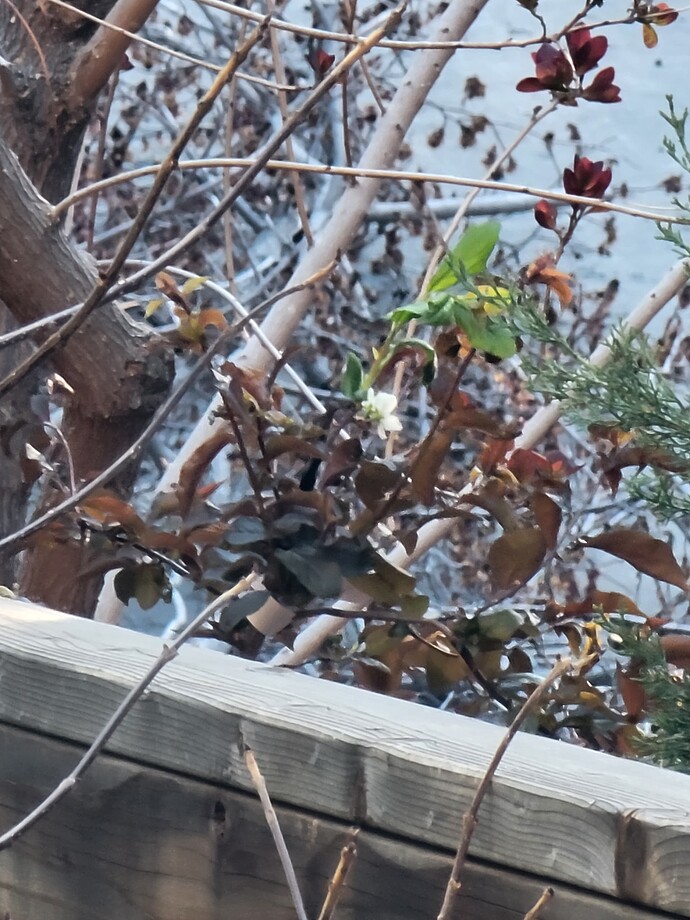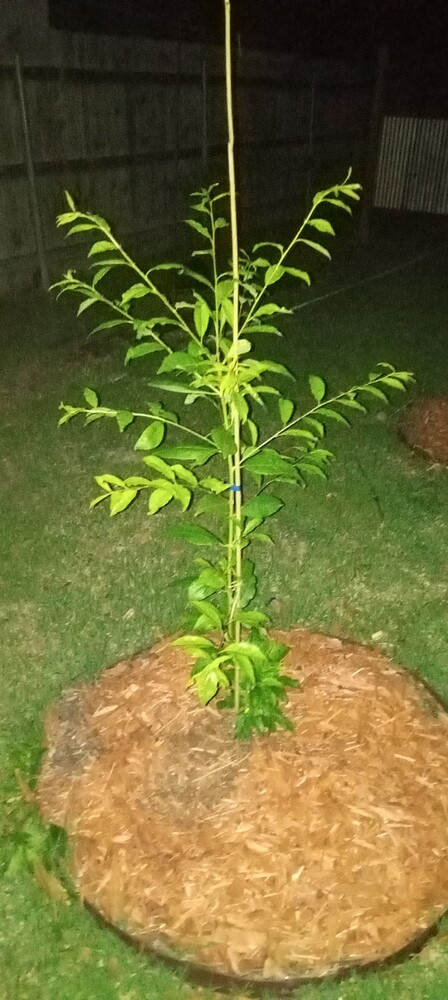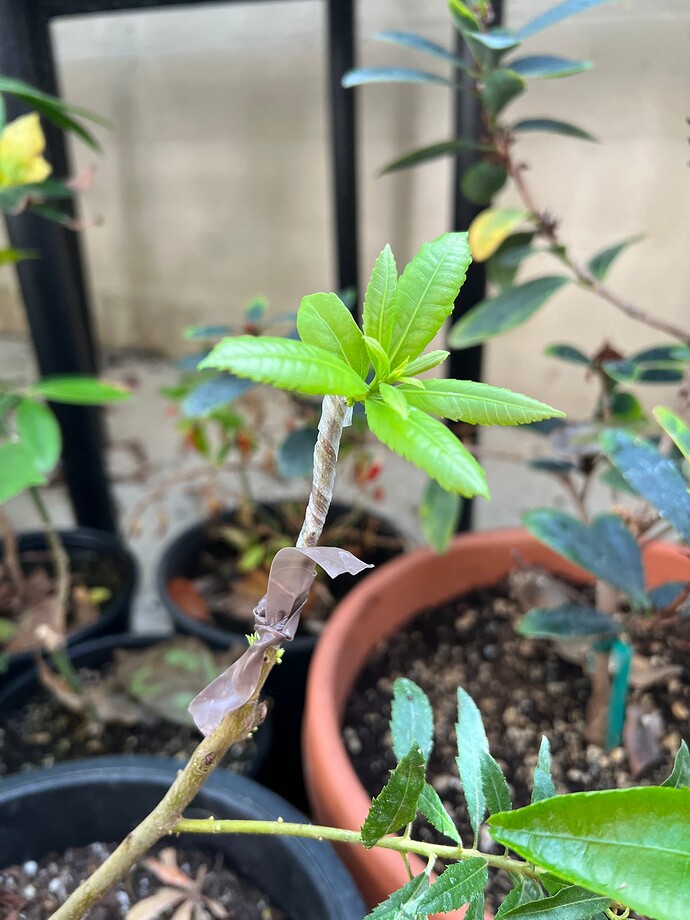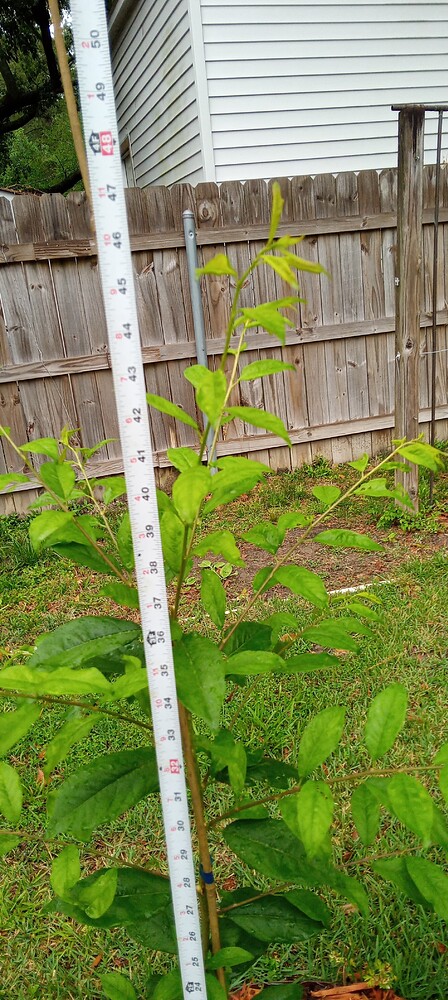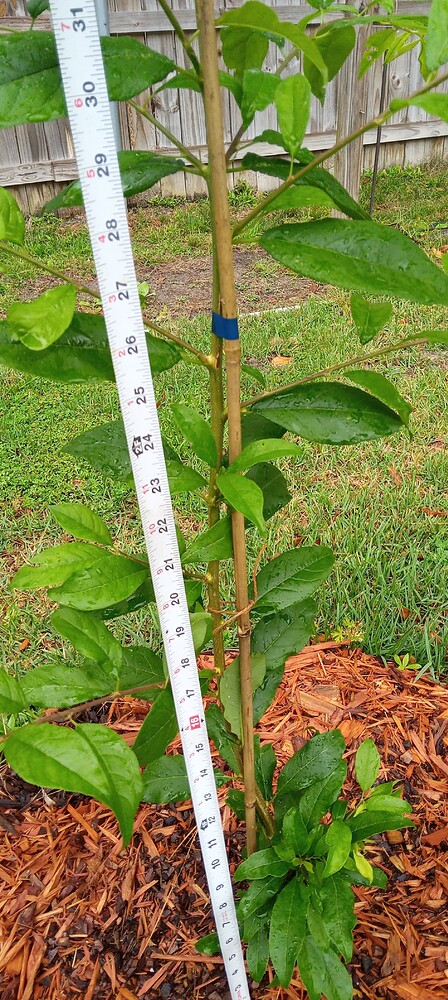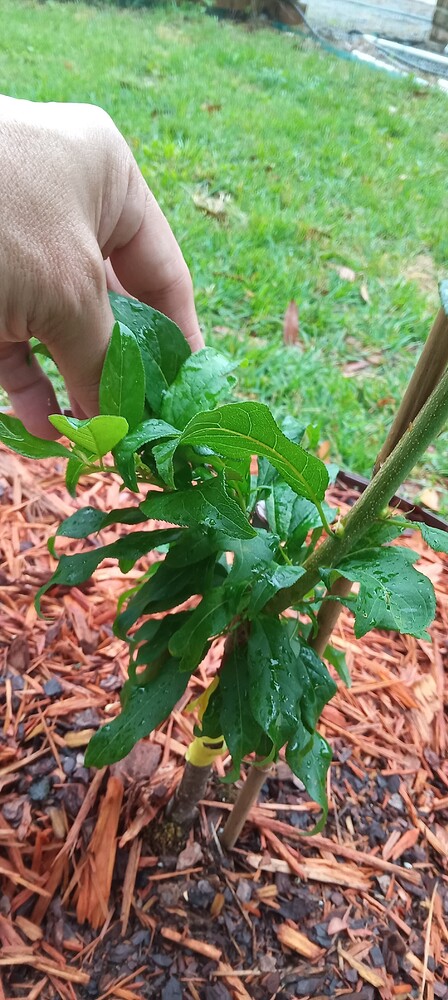Threw this plum graft on my neighbors red leafed flowering plum.
May be wrong, but I think sweet cherry will not graft to flowering cherry.
My current winner for graft of the year.
Grafted February 25th. Dapple Dandy on Rootpac-R.
Height is now approaching 4 feet. I pinched back the apical main about 3.5 weeks ago and look how nicely the lateral scaffolding had pushed.
I’m curious where did you hear that? Also the various flowering cherries are not one species, perhaps YMMV.
I have apricots on plum, I have plums on peach, etc. It doesn’t seem prunus genus is particularly picky. Theorycrafting here, but I’m thinking Cherries species being even more similar to each other should be even more compatible, right?
Not necessarily. Graft incompatibility is widely documented in various peach/plum/cherry/almond varieties. I have an older copy of Plant Propagation Principles and Practices that lists several incompatible combinations.
I brought that question up several years back on the forum. The consensus was they were incompatible. I’ve not actually tried it myself though.
Fair enough. I’m interested to try sweet/sour cherry on wild prunus pensylvannica. I’m optimistic that it may work.
Hey has anyone tried transplanting a successful graft right after it starts pushing? I am grafting peaches and in the past I tried moving the rootstocks in the early spring (before leaves) and then grafting, but those always failed. Peaches are very fickle and it seems the lack of vigor from the stock being moved put a big dent in things. But I was thinking that perhaps a later transplant would work: wait until the graft has definitely taken and it’s starting to push, and then transplant the tree. I have some extra takes now, so I just moved one tree as an experiment. I have moved actively growing peaches in the past without a lot of luck but this guy has only started growing so maybe it will do better? We will see.
I have a great many peach rootstocks but they are never in the right permanent place, most of my 20+ year old peaches have been failing but I don’t know they failed until its too late to put a rootstock in its place to graft … unless I want to wait a whole season, which I have had to do several times.
Transplant shock. If you move them the growth may slow or stop. Worse yet they may go down in flames. They may be fine if you move them, but I’d wait till fall for more of a guarantee. I’ve not had much luck moving anything after growth has started.
This yangmei/Myrica rubra graft from Marta seems to have taken. This one is her female selection ‘Eve’ that I grafted onto Myrica californica. Unfortunately, none of the grafts I did of the male selection are showing signs of life.
My main plan is to wait for fall, but I have extras to burn so thought it was worth an experiment. I have had some successful moves in the past but the tree was not far along at all. All the later moves failed for me. I was curious if anyone had tried to move new grafts in the spring right after take.
It’s the roots that are active. IMO there is not much difference between a take and active growth. I think your doing right only burning the extra.
Yes, persimmons have dark black callus. Pawpaws also do. It’s kinda freaky if you’re not expecting it. It also makes the young grafts especially good for demonstrating how a graft heals together and what it looks like when it does.
Not peaches. Only pears (on seedling pear/quince) and medlars (on hawthorn) and only after a very wet winter. Plus we have clay soil.
I’ve started grafting rootstock suckers of older trees with compromised trunk or “old age problems”. I take it as a hint to create some insurance. Unless there is a fungus (noting that we probably don’t have root borers in CE) the roots are often good to go or the sucker grows it’s own.
Hi Phil.
I told you that Rootpac-R was your rootstock, and this tree is proof.
If that Dapple Dandy pluot sprout is 4 feet long, it’s time to properly decapitate it.
I like to start the primary branches at a low height, so that once the structure of the tree is made, it is comfortable for all the tasks (harvesting, pruning, treatments, etc…).
My advice would be to decapitate it now (green pruning invigorates the tree), at an approximate height of between 1.3 and 1.6 feet, leaving three branches or sprouts, below the cut to start the primary branches with them, and shape the structure of the tree.
Best regards
Jose
Thanks José!
Yeah it’s doing wonderfully.
Funnily enough, I already ‘decapitated’ it to promote the lateral branches you see in the photo.
I’ll take a look at it again to see what I want to do…maybe taking off a few of the higher branches.
Doing is learning.
![]()
Here is that Dapple Dandy with some measurements. If I am trying to keep existing laterals as opposed to hoping new ones push, I’ll need to top it higher than what you recommended José.
Phil, that tape measures in inches right?
Yeah… We are stuck with English units in the US!
That whole change to metric thing they talked about in the 70’s never happened!
Ok, that pluot is 37 inches tall (almost one meter tall), and it’s time to decapitate it.
Before cutting anything, you have to see the following.
At a height from the ground between 15 and 20 inches you have to locate three sprouts, which are oriented at 120° angles, and if they are a little staggered in height much better.
Tell me if it meets this requirement, and you will cut at a height of 20 inches from the ground, leaving those three shoots, and removing any other shoots below.
Before cutting I want to see those shoots.
Best Regards
Jose
